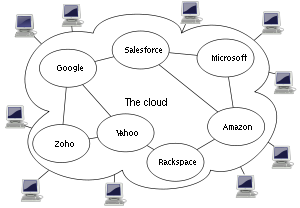Grid computing is a term referring to the combination of computer resources from multiple administrative domains to reach common goal.
What distinguishes grid computing from conventional high performance computing systems such as cluster computing is that grids tend to be more loosely coupled, heterogeneous, and geographically dispersed. Although a grid can be dedicated to a specialized application, it is more common that a single grid will be used for a variety of different purposes. Grids are often constructed with the aid of general-purpose grid software libraries known as middleware.
Grid size can vary by a considerable amount. Grids are a form of distributed computing whereby a “super virtual computer” is composed of many networked loosely coupled computers acting together to perform very large tasks. Furthermore, “Distributed” or “grid” computing in general is a special type of parallel computing that relies on complete computers (with onboard CPUs, storage, power supplies, network interfaces, etc.) connected to a network (private, public or the Internet) by a conventional network interface, such as Ethernet. This is in contrast to the traditional notion of a supercomputer, which has many processors connected by a local high-speed computer bus.
Read more of this post

